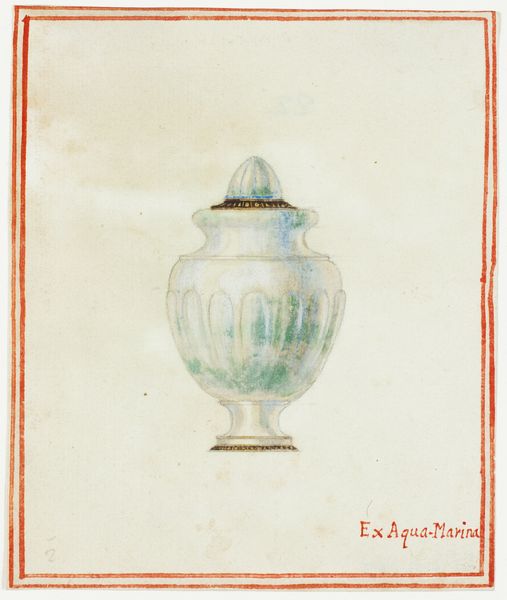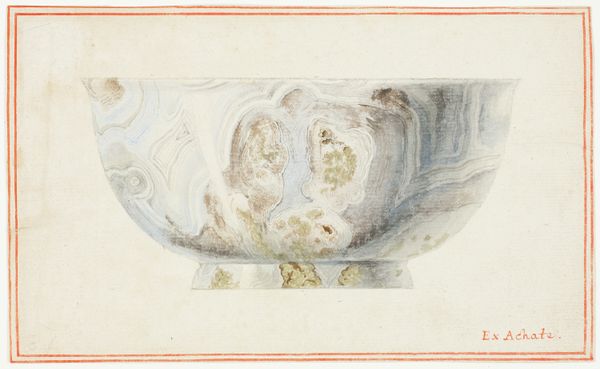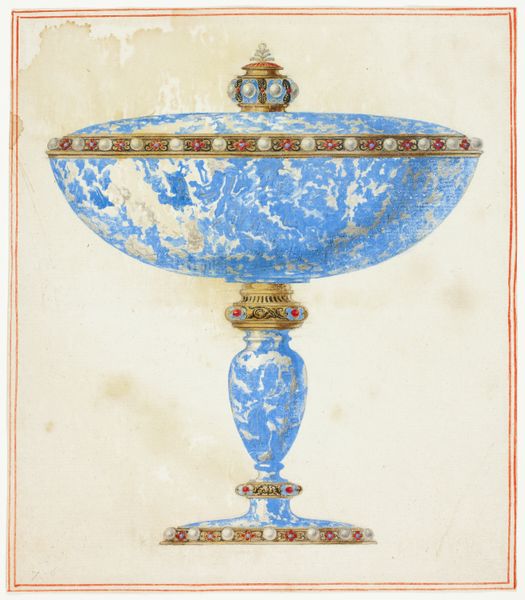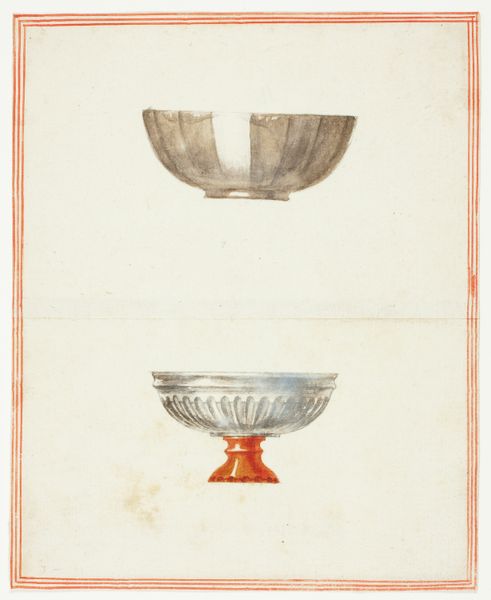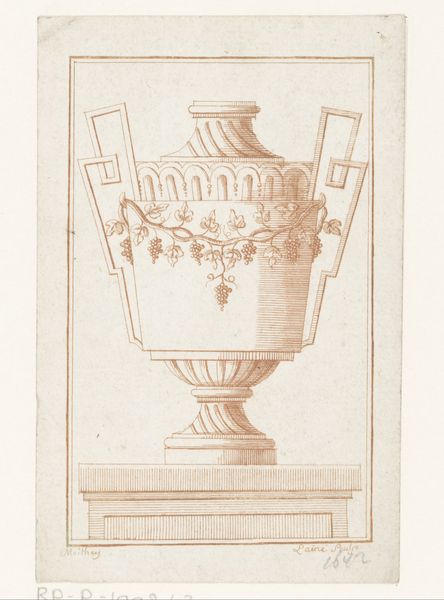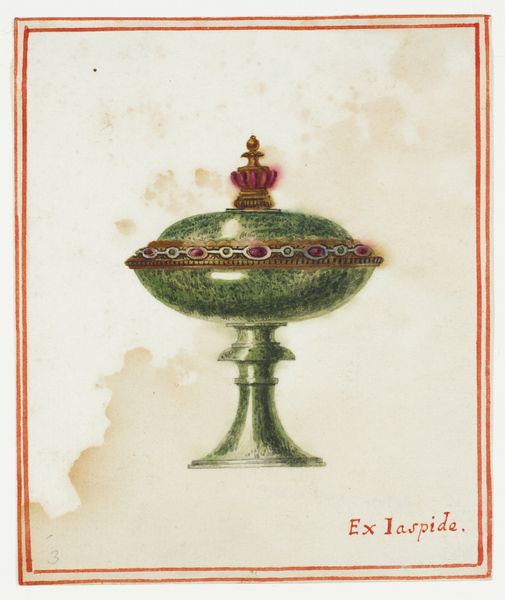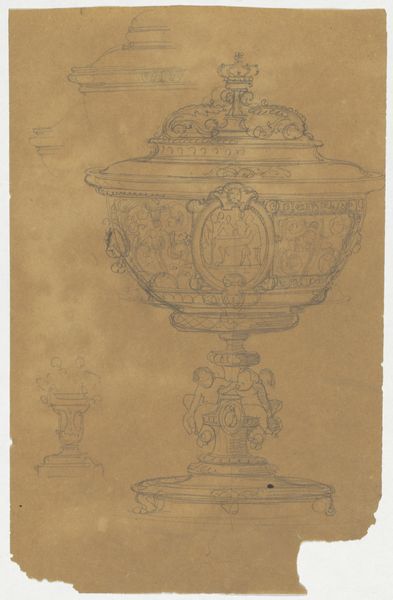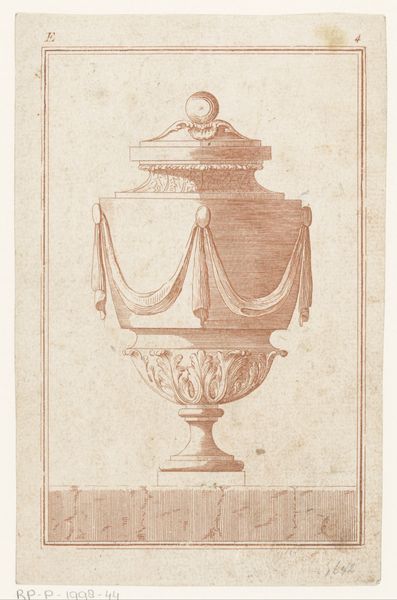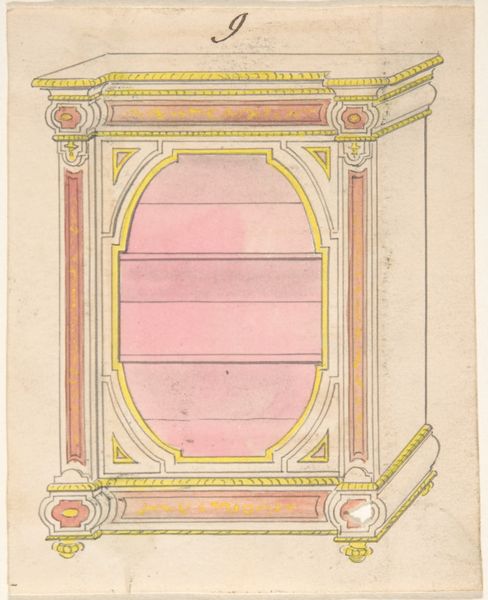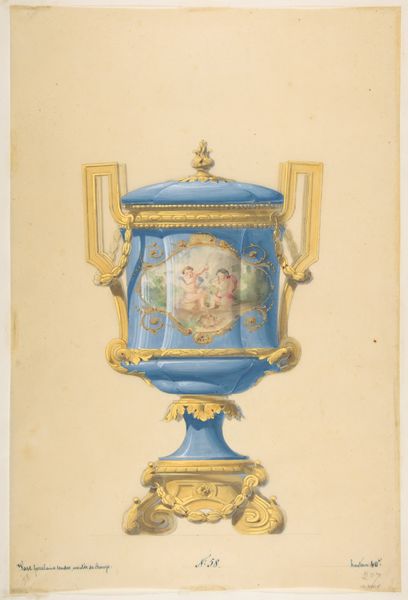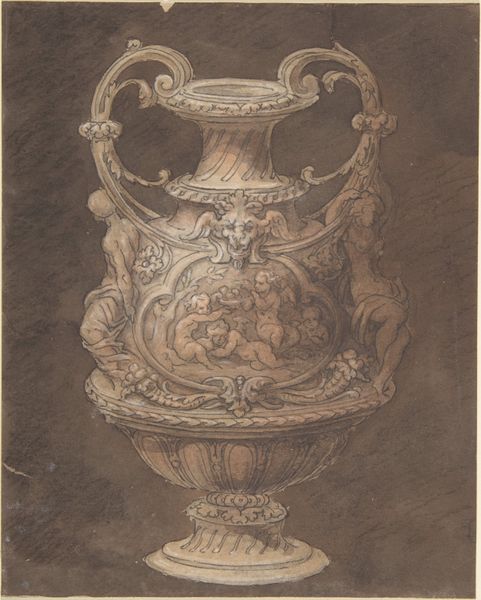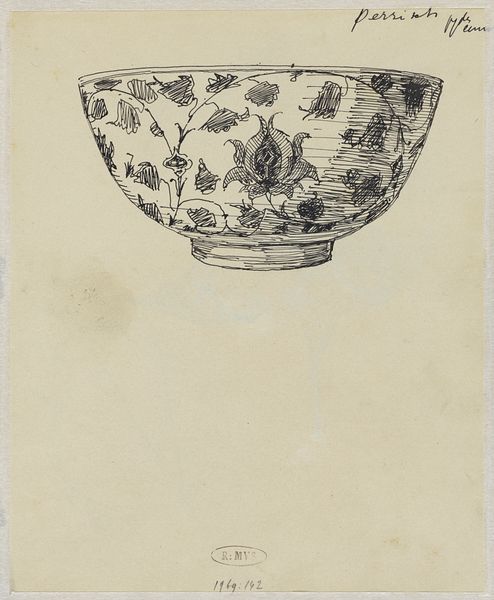
drawing, coloured-pencil, painting, print, gouache, paper, watercolor, chalk
#
drawing
#
coloured-pencil
#
water colours
#
painting
# print
#
gouache
#
paper
#
watercolor
#
coloured pencil
#
classicism
#
chalk
#
academic-art
Dimensions: 108 × 90 mm
Copyright: Public Domain
Curator: Standing before us is "Ex Egiata," a drawing attributed to Giuseppe Grisoni. Executed in chalk, gouache, colored pencil, and watercolor on paper, this work is currently held here at The Art Institute of Chicago. Editor: It strikes me immediately as ethereal. The pastel shades, the almost weightless quality of the bowl itself—it feels like a captured dream. Is that delicate red border original? Curator: The border definitely echoes a classical frame. This work comes from a time deeply engaged with classical forms and mythology. Even without figures, it evokes a certain narrative grandeur, don't you think? The bowl is placed at eye-level and presented like a sacred object or fragment that survived time. Editor: Absolutely. Notice how Grisoni manipulates light. The subtle gradations of blue and green suggest depth, and the almost hazy edges give it a luminous quality. However, there's a slight tension in the rendering; that bronze support, while ornate, feels almost too heavy, like a grounding element against the bowl's airy form. Curator: I agree. I think Grisoni is contrasting earthly permanence with the ephemeral quality of beauty or perhaps even memory. A bowl suggests utility, domestic life—but this one transcends that, doesn't it? Also the term “Ex Egiata” written on the right evokes for me an extraction, or coming ‘out of Egypt’. This takes us straight into thinking about ancient civilizations and treasures taken as spoils of conquest. Editor: So you’re thinking about appropriation? Curator: Yes, definitely! As for how it was achieved, note the visible strokes and the layering of different colors; chalk, gouache, watercolour, pencil: the blending suggests painstaking process with many subtle alterations. Also, note how little color there is elsewhere! Editor: A point well-taken. Curator: It’s a reminder of art's power to transform everyday objects into symbols laden with historical weight, I think. Editor: And for me, it reaffirms how close visual examination reveals subtle, deliberate choices that contribute to an artwork’s unique presence. The eye doesn't know where to rest! Curator: Quite so. Thanks to the blending between a more traditional European art and an idealized representation of relics or archaeological memory that remains evocative.
Comments
No comments
Be the first to comment and join the conversation on the ultimate creative platform.
